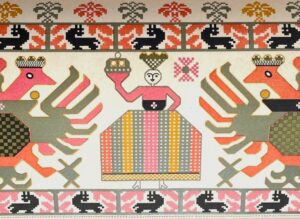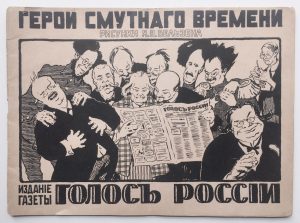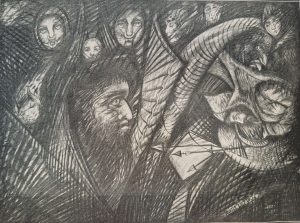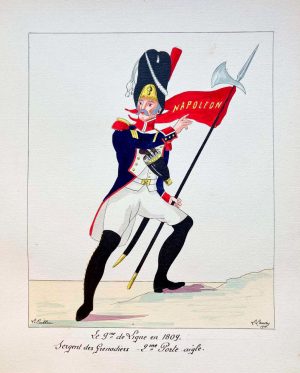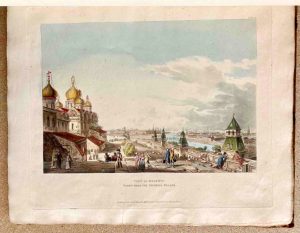Our Notes & References
First edition of the first work on the celebrated Russian ornaments for textiles – an important study, by a leading and polyvalent art historian, beautifully illustrated with striking full-page colour plates.
Scarce on the market: immediately recognised as a groundbreaking work, it can be found in public institutions; but we could not trace any example selling at auction outside Russia in recent decades.
Vladimir Stasov (1824-1906) was one the most active, wide-ranging and influential Russian art critic of the 19th century. He acquired many connections while working as a secretary of Count Anatolii Demidov, 1st Prince of San Donato, a famous Russian industrialist, diplomat, bibliophile and arts patron. In 1854, Stasov helped organise a group of the Russian composers known as The Mighty Five, and in the 1860s he promoted the ‘Peredvizhniki’, a group of Russian realist artists, and helped organising their exhibitions.
Stasov collected Russian folk ornaments for more than a decade – an interest he developed in line with the general rising awareness of Russian folk culture, following the abolition of serfdom in 1861. Interestingly, this publication echoes a similar interest in origins of ornament that spread across Western Europe in the mid-19th century, largely through the British Arts and Crafts movement: see the movement’s principal texts, Ralph Wornum’s ‘Analysis of Ornament’ and Jones’s ‘Grammar of Ornament’, both published in 1856.
Stasov’s lavishly produced work was sponsored by the important Imperial Society for the Encouragement of the Arts, founded by Tsar Nicholas I. Several issues were planned, but only this first issue, on textiles, came out. Stasov provides a detailed classification of patterns, arguing in its 25 pp. text that the Russian folk ornaments have non-Russian roots, including Finnish and Persian. The patterns reproduced in colour come from various household textiles (towels, bed sheets, bed throws) and items of traditional Russian clothing (shirts, aprons, head scarves, etc.). They remind us how central was the role Russian and Ukrainian textile ornaments played in the visual culture of these countries, with some plates displaying such a striking ‘modernity’ reminiscent of early 20th-c. avant-garde (Goncharova among others).
Provenance
From the estate of Geoffrey Elliott (1939-2021), banker of Russian descent, author of books on 20th-c. history. Geoffrey and his wife Fay were noted collectors, especially of Oscar Wilde, Evelyn Waugh and other literary figures. Russia was also an important theme: Geoffrey’s grandparents were interned in a Siberian tsarist prison camp before the October Revolution, and he focused most of his published works on the Cold War.
The Elliotts donated a significant part of their collection to the library of Leeds University in 2002, but kept the Russia-related items, which we consequently acquired.
Bibliography
Voloshina L.A. Russkii narodnyi ornament. Vyp. 1. Shitye, tkani, kruzheva // Traditsionnoe prikladnoe iskusstvo i obrazovanie. 2018. №4 (26).
Physical Description
Small folio (27x37cm). xx pp. inc. title, 25 pp. explanations with b&w illustrations in text, 80 chromolit. plates, some double-page (numbered 1-75, but some numbered ‘bis’).
Binding
Original publisher’s colour printed upper wrapper kept in contemporary dark green half-sheep over green cloth boards, spine with raised bands, gilt decorated and lettered in French.
Condition
Slight yellowing and occasional foxing to pages, Binding rather worn, extremieties and upper board especially, spine chipped with minor losses at both ends; in attractive condition internally, with slight yellowing and occasional foxing, but fresh overall with the plates in well-preserved, vivid colours.















